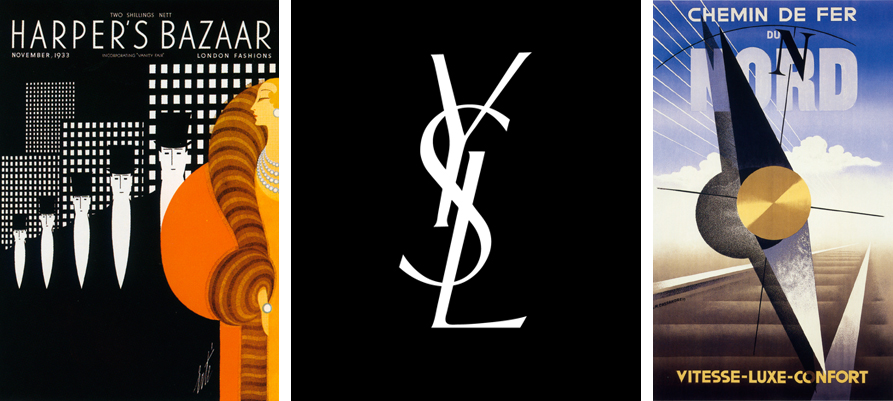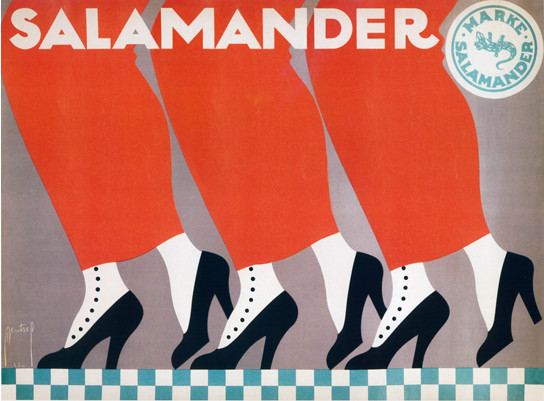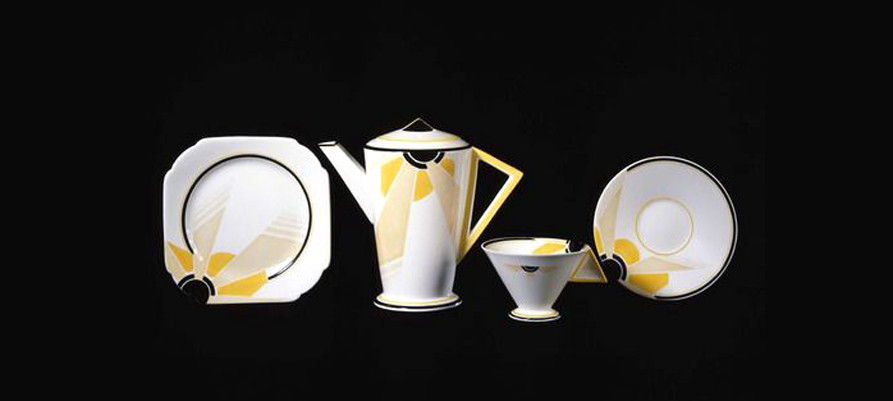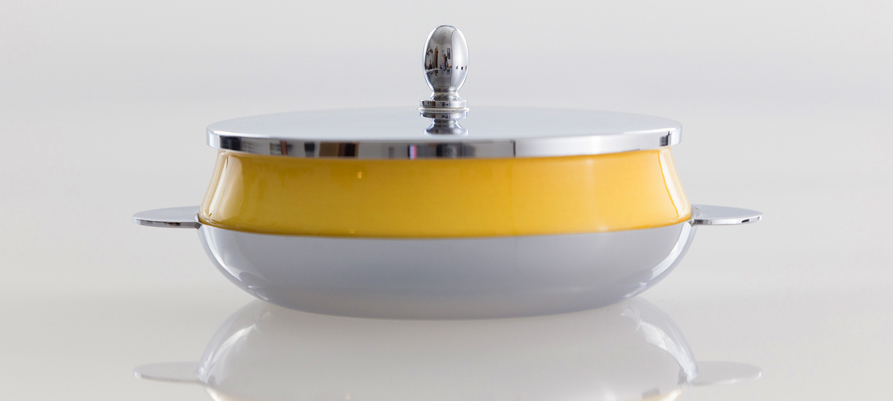In my last post I mentioned that ‘Wiener Werkstätte’ had a direct influence on the development of art déco. This style flourished between 1919-1939 and involved painting, architecture, sculpture, graphics and also small items of everyday use about which I would like to expand on today.
The ‘art déco’ term derives from French art décoratif – decorativeness is one of the main traits of this style. Pieces are usually in light color themes (especially favoured were yellow and gold), with symmetrical or diagonal compositions, usually strongly simplified and geometrized. Decorations and ornaments often referred to ancient Egyptian art.
One of the most well-known designers from that period was Cassandre, a very interesting artist about whom I will surely expand on in further posts. Cassandre designed posters, typefaces and graphic signs. He is the author of Yves Saint Laurent logo! Art déco style quickly spread to fashion world too. Fashion magazines’ covers were designed by splendid illustrators such as Erté and Barbier. Their pieces were analyzed by creators of popular movies such as ‘The Great Gatsby’, the plot of which takes place in the 30’s during the biggest flourish of art déco. Basing on those drawings they could recreate the fashion of that period.
Connections with the fashion world are visible in many great advertising posters from the beginning of the 20th Century. Below – an advertising poster for the famous shoe making company Salamander. Simplified forms, using rythm (multiplication of elements) and pure colors make the posters eye-catching.
Personally, I find the objects of everyday use from that period very endearing. Besides, nowadays it is also fashionable to have kitchen accessories in geometrical shapes. Retro style, beautiful design, high quality of execution and functionality – these objects surely are all this, serving as ornaments to any interior. They are neat and elegant. They fit perfectly into modern interiors, see for yourselves:
In the photo below – an object from my own collection. It is a unique butter dish from the 30s. It has the perfect shape with dominating, intensive yellow color.





